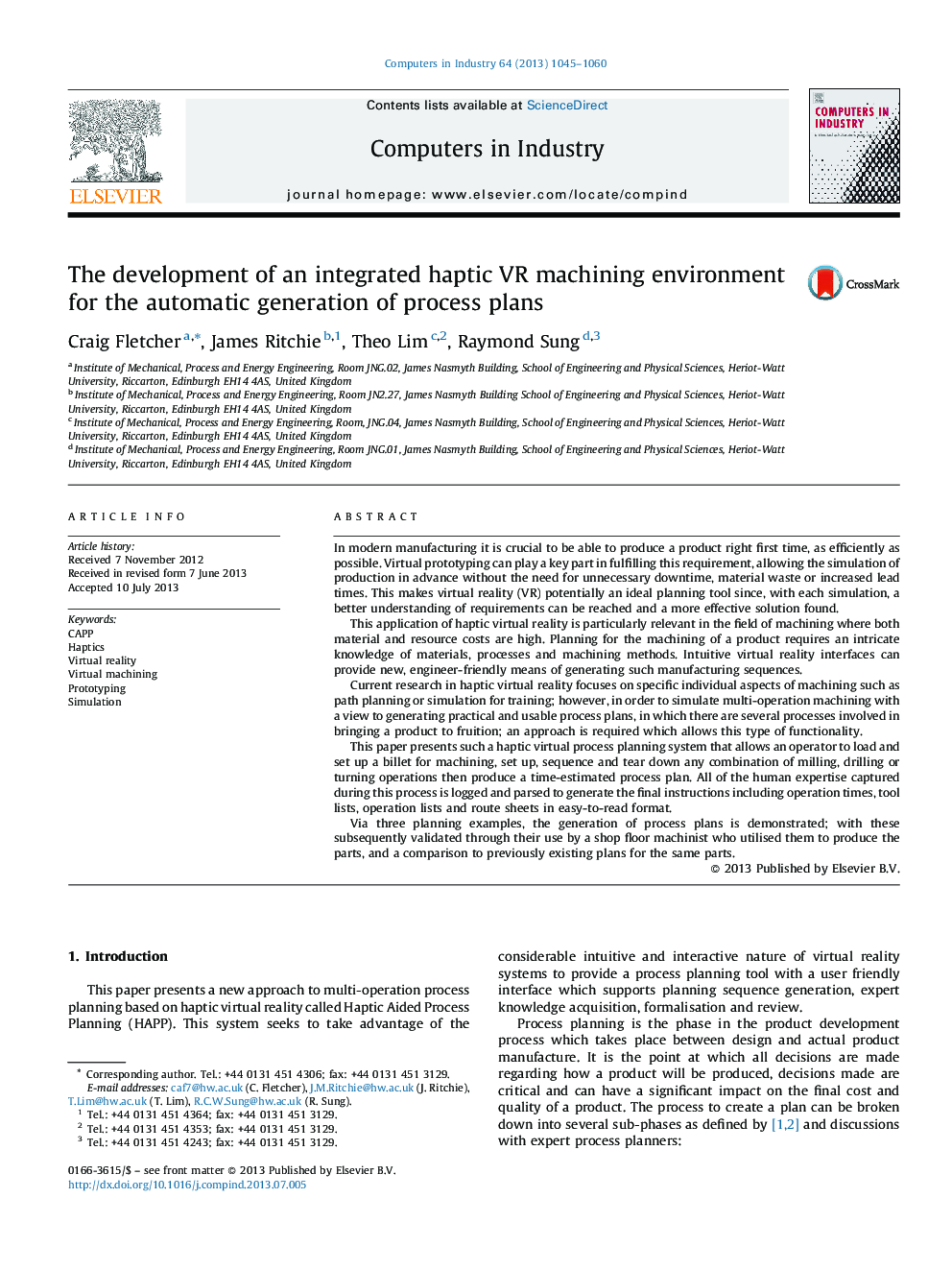| Article ID | Journal | Published Year | Pages | File Type |
|---|---|---|---|---|
| 509169 | Computers in Industry | 2013 | 16 Pages |
•A haptic virtual environment has been developed.•This can simulate machining in real time of drilling, 2.5D milling or turning.•Expert knowledge is captured.•This knowledge is parsed into a process plan.•The process plan is compared against existing process plans and validated on the shop floor.
In modern manufacturing it is crucial to be able to produce a product right first time, as efficiently as possible. Virtual prototyping can play a key part in fulfilling this requirement, allowing the simulation of production in advance without the need for unnecessary downtime, material waste or increased lead times. This makes virtual reality (VR) potentially an ideal planning tool since, with each simulation, a better understanding of requirements can be reached and a more effective solution found.This application of haptic virtual reality is particularly relevant in the field of machining where both material and resource costs are high. Planning for the machining of a product requires an intricate knowledge of materials, processes and machining methods. Intuitive virtual reality interfaces can provide new, engineer-friendly means of generating such manufacturing sequences.Current research in haptic virtual reality focuses on specific individual aspects of machining such as path planning or simulation for training; however, in order to simulate multi-operation machining with a view to generating practical and usable process plans, in which there are several processes involved in bringing a product to fruition; an approach is required which allows this type of functionality.This paper presents such a haptic virtual process planning system that allows an operator to load and set up a billet for machining, set up, sequence and tear down any combination of milling, drilling or turning operations then produce a time-estimated process plan. All of the human expertise captured during this process is logged and parsed to generate the final instructions including operation times, tool lists, operation lists and route sheets in easy-to-read format.Via three planning examples, the generation of process plans is demonstrated; with these subsequently validated through their use by a shop floor machinist who utilised them to produce the parts, and a comparison to previously existing plans for the same parts.
